Why are my Amazon Ads constantly over budget, and how do I adjust them?
For new sellers in the early stages of Amazon Advertising, a common situation is that ad spend constantly exceeds the budget. Once the budget is exceeded, ad campaigns automatically pause, reducing visibility, which is very detrimental to launching new products.
Budget overspending, simply put, means that ad click costs exceed the daily budget amount.
However, Amazon's daily budget amount is not strictly followed on a daily basis. Instead, it is calculated based on the average over a calendar month. On any given day, ad spend can be lower than the daily budget, or it can exceed the average daily budget by up to 25%.
For example, if your budget is \$100 and you get \$90 worth of clicks on the first day, you could get up to \$110 worth of clicks on the second day. This would bring the total spend for two days to \$200, which is an average of \$100 per day.
The reason for this fluctuating billing is mainly due to the non-real-time nature of Amazon's data updates. In other words, when you run ads, due to data update delays, Amazon does not immediately pause ads when the budget is exhausted. Clicks can still occur even after the budget is overspent.
So, how do we know which ad campaigns are over budget and when they exceeded it?
Open the "Ad Campaigns" feature in SellerSpace, and select to view ad campaigns where "Today's Spend Reached 100%". You can easily filter out all over-budget ad campaigns in your store and directly see the time point when the budget was exceeded for each marketplace.
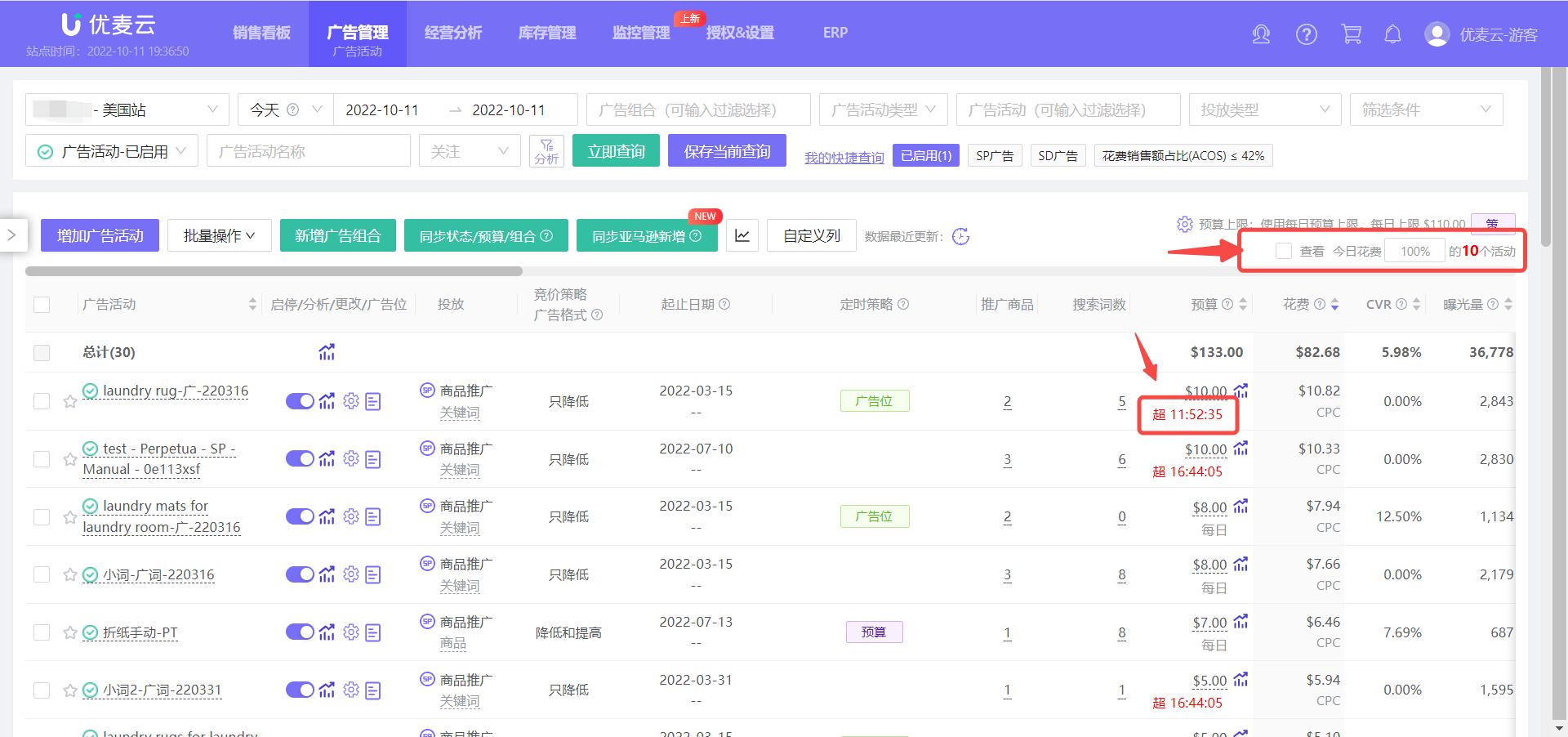 +
+
If you encounter budget overspending, how should you adjust?
When you identify over-budget ad campaigns, we need to further analyze the reasons for overspending to take different adjustment strategies.
1. Daily budget is too low
In the early stages of launching new products, the ad daily budget may be low due to limited funds. The budget may be used up before peak sales hours, resulting in very few conversions.
At this time, we can use Scheduled Budget to increase the budget during peak sales hours. If the budget is still overspent, we can increase it again to seize traffic and conversions during peak hours. During slow sales periods, we can reduce the budget to reduce ineffective spending.
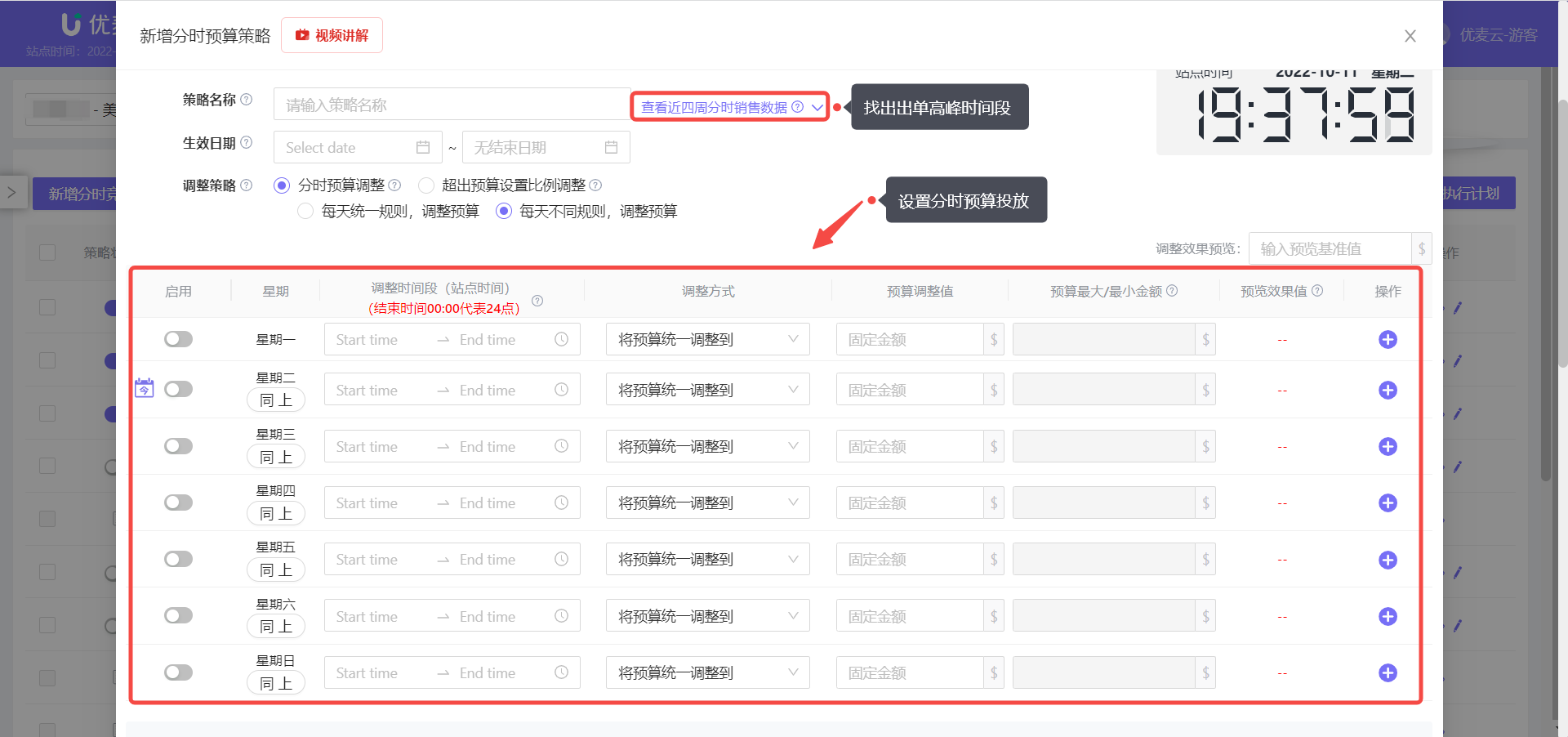 +
+
(Source: SellerSpace Scheduled Budget Strategy)
Budget Overspending Adjustment Strategy:
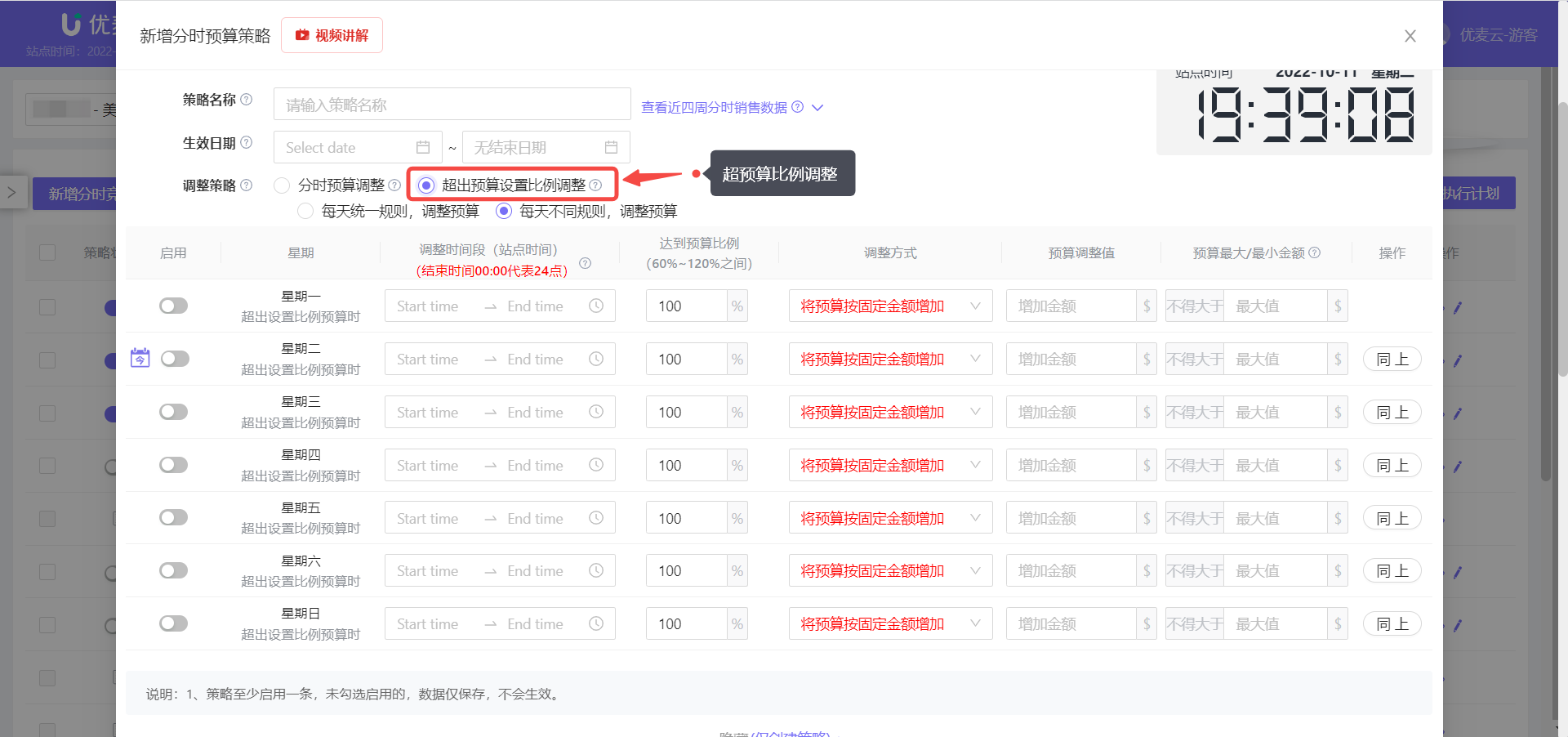 +
+
(Source: SellerSpace Scheduled Budget Strategy)
2. Large number of invalid clicks
We can analyze search terms to identify high-click, irrelevant, and non-converting customer search terms, and promptly add them as negative keywords to save budget.
Open the "Search Terms" feature in SellerSpace, select "Last 30 Days", choose the ad entities to analyze, filter for keywords with "No Orders but Spend", sort by "Spend" in descending order, identify terms with low product relevance, high spend, and no conversions, and directly add them as negative keywords.
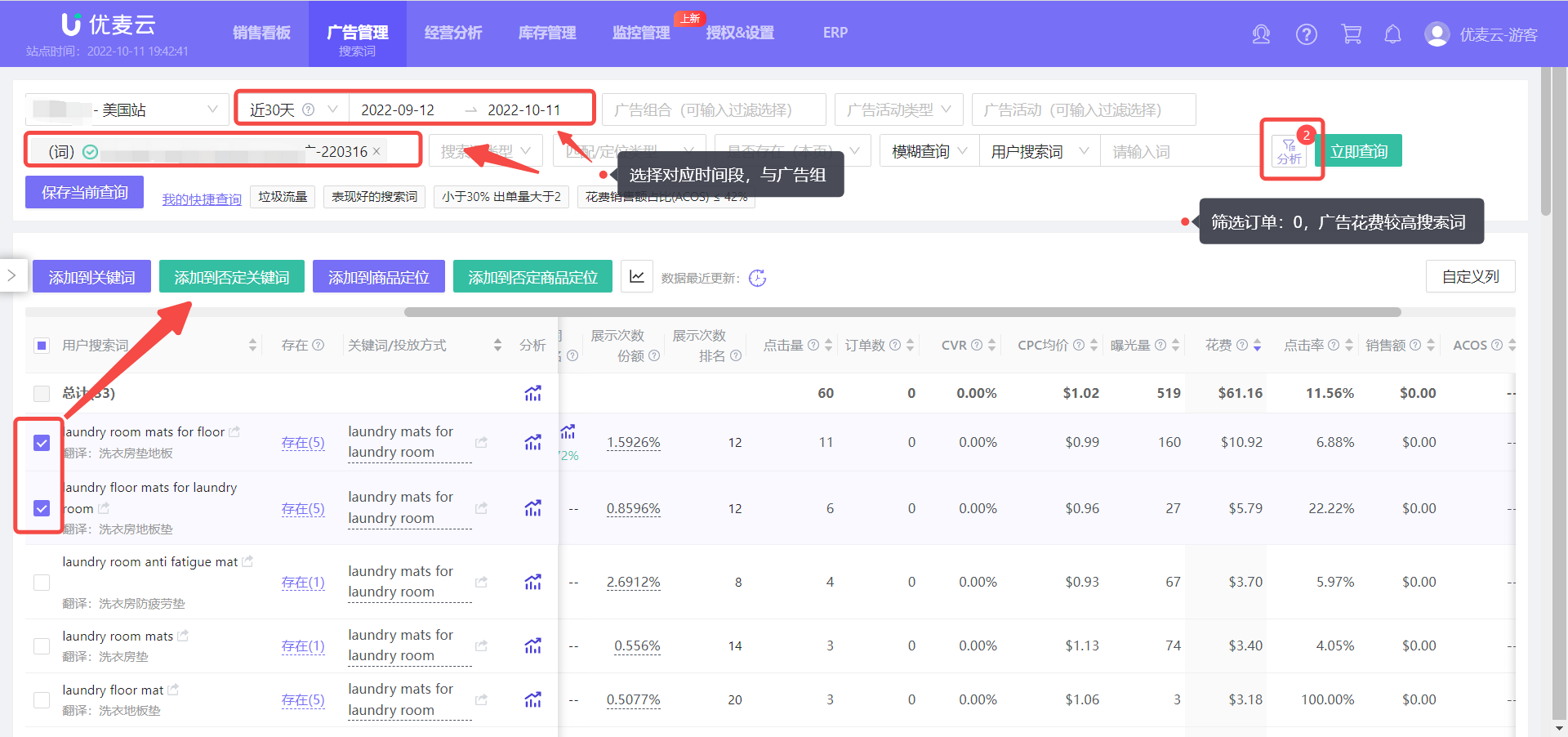 +
+
(Source: SellerSpace Search Terms Feature)
3. CPC bid is too high
In the early stages, new product ads generally have little weight and no advantage when competing with other competitor ads. Therefore, higher bids are needed to obtain premium ad placements, but with a limited budget, budget overspending can easily occur.
At this time, we can use Scheduled Bidding to lower bids during non-peak sales hours and appropriately increase bids during peak sales hours to reduce ad waste and make ad clicks closer to real consumers.
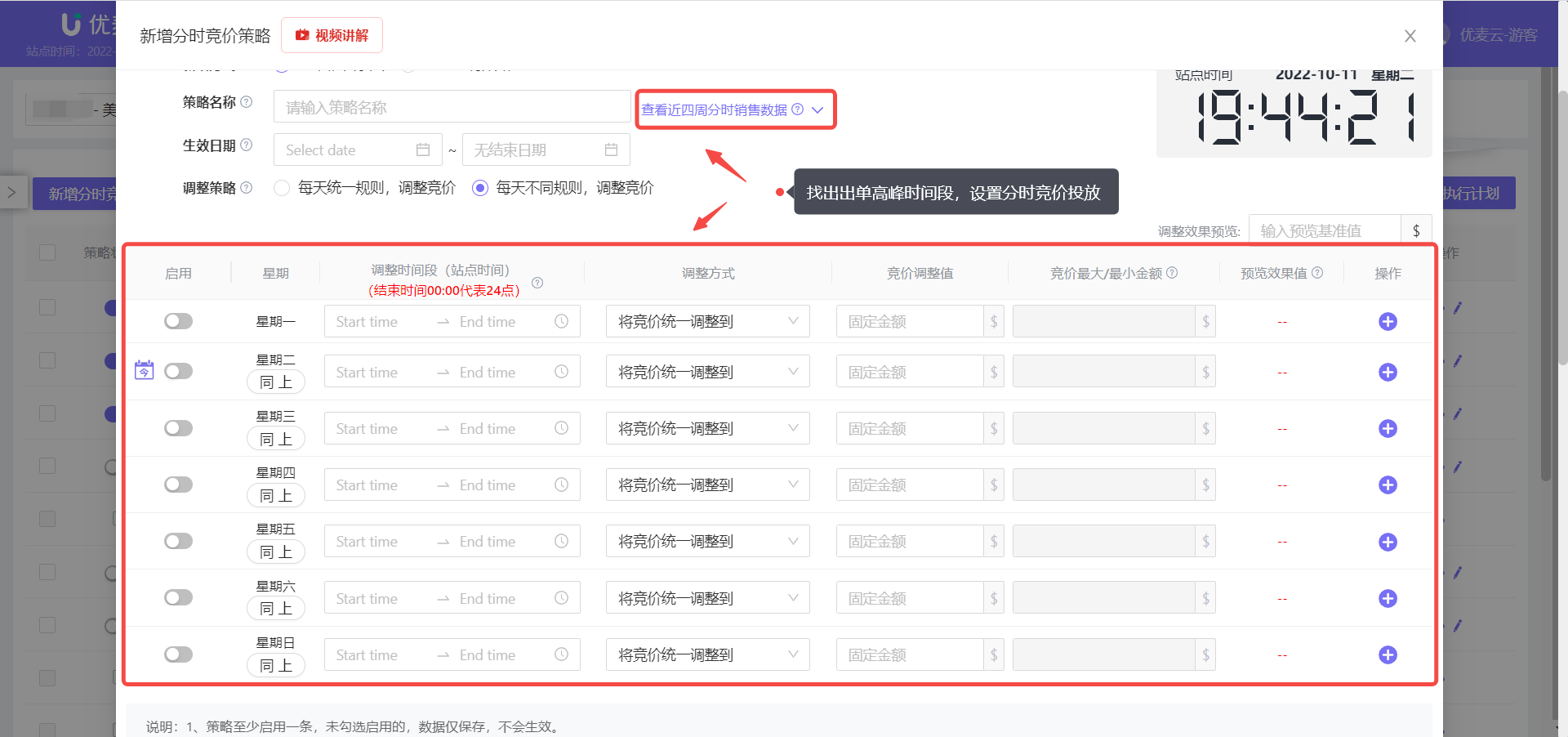 +
+
(Source: SellerSpace Scheduled Bidding Strategy)
At the same time, we can also analyze ad performance to optimize the Listing accordingly. Through precise keywords and high-quality descriptions, we can bring more conversions, improve ad quality scores, and lower CPC.
Click-Through Rate (CTR) - Influencing factors: Title, Images, Price, Category, etc.
Conversion Rate - Influencing factors: Images, Price, Product Description, Reviews, Q&A, etc.
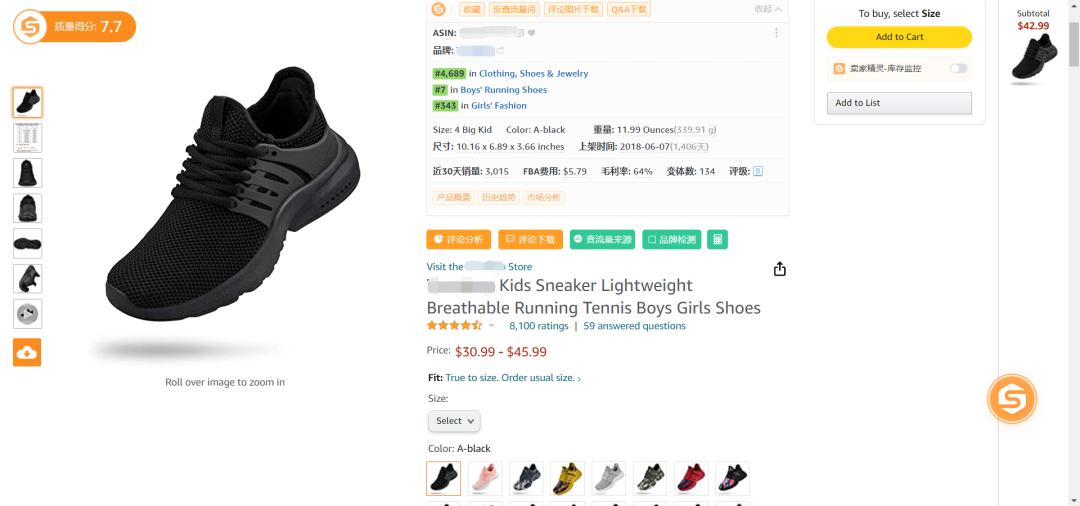 +
+
(Source: Amazon Top Selling Product Example)
4. Too many products in the ad group
Many new sellers like to put all products in one ad group in the early stages of advertising for easy management. In fact, it is not recommended to promote multiple products in the same ad group at the same time. This can easily lead to budget overspending and cause targeting deviations. For example, some products may have no impressions, while others may receive a large number of clicks.
Ad campaigns should focus on key products. The best approach is to promote one product per ad campaign.
If you have already added multiple Listings in the same ad group, be sure to analyze your ad performance data and remove Listings and keywords with poor conversion rates to make your ads more focused and achieve the goal of bringing more conversions with the same budget.
The better the conversion rate, the higher the weight of the ads will be. With the budget unchanged, the effect of the ads becomes better, thus forming a virtuous cycle.

SellerSpace is a concise tool to manage multiple Amazon accounts, focuses on solving various problems encountered by sellers during operating Amazon business.
Mail:support@sellerspace.com
©2018-2025 SellerSpace.COM All Rights Reserved
Online
Service
